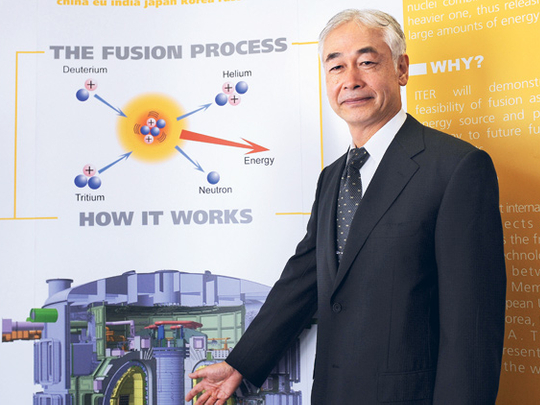
It is one of mankind's most daring experiments — a quest to produce virtually limitless clean energy that, if successful, would revolutionise life on Earth by harnessing the explosive power of the Sun. Such is the appeal of the idea that the greatest powers of the world, China, India, Japan, South Korea, Russia, America and the nations of the European Union, have united to pursue the stellar objective. Their aim is commercially viable nuclear fusion — deriving energy from crushing together the nuclei in atoms rather than splitting them, as is done now in nuclear fission reactors.
There is just one hitch. Until now, the world's largest nuclear fusion project, the International Thermonuclear Experimental Reactor (Iter), has been consuming far greater quantities than predicted of its most-needed fuel: cash.
A steep rise in costs
The estimates in 2006 suggested that Iter would cost about five billion euros to build. Now the guess is 15 billion euros. Earlier this year, the project appeared to be on the brink: "I think the momentum of the project may be in very deep trouble," one Iter scientist told Nature. The problem was exacerbated by the fact that, even if it is built, Iter will not start producing energy until the late 2020s. Even then, the electricity will not be used commercially, only to prove that the technology for commercial fusion reactors is viable. Even optimists at Iter recognise that the subsequent gap until commercial reactors are ready means that fusion-generated power won't come online before 2040, at best.
The more cautious suggest that fusion is only likely to play a role in our energy needs during the second half of this century. For cash-strapped countries, such timescales make Iter not so much a stellar achievement as pie in the sky. "It is taking money away from renewables such as offshore wind, solar and geo-thermal [energy]. ... And there are screaming short-term needs — like decarbonising our electricity production, says Doug Parr, chief scientist at Greenpeace UK. "We are continuing to put large quantities of money into something that may not deliver."
But at Iter, due to be built in southern France, scientists insist commercial fusion is possible — and that when it is harnessed, the impact will be as revolutionary as promised. "The challenges are extraordinary, but we want a pay-off at the end," says David Campbell, deputy head of Iter's Fusion, Science and Technology department. "I'm confident that Iter will emerge. From simple fuels like seawater, fusion produces huge amounts of energy with no long-lived radioactive by-products. In the long term, it could take over electricity generation."
Energy from seawater — who wouldn't invest? The difference is that, unlike alchemy, nuclear fusion is a proven scientific fact. It has been happening, on a small scale, at a research centre outside Oxford since 1991. The science is simple. The fusion process echoes that taking place in the energy-producing core of the sun. Isotopes of hydrogen called deuterium and tritium are heated until their nuclei fuse together, producing helium.
The most exciting bit is that only a small amount of fuel is required and it is readily available. "Deuterium we can get from seawater, tritium is something that will be bred in the reactor itself," says Iter's principal deputy director-general, the German nuclear physicist Norbert Holtkamp.
There are other advantages, he says: "The process itself cannot go into a chain reaction [and trigger a meltdown]. And while it does produce radioactive waste, this has a half-life of 100 to 200 years, after which the material can be reused." It is arguments like these — allied, perhaps, with the inevitable allure for politicians of vast, groundbreaking projects that push the frontiers of science, that have at last secured Iter the money it needed to get built.
On July 28, the seven backers of Iter announced that they had reached a deal to finance to project. In Cadarache, in the hills of Provence, two million cubic metres of rock have been moved to create a level site 1,000 metres long and 500 metres wide. The project's other figures are considerably more mind-boggling. That is because, while the science of fusion is well understood, making it happen and sustaining the reaction is vastly complex.
The hydrogen isotopes need to be heated to 150 million degrees centigrade, ten times as hot as the core of the Sun, at which point the atoms begin to disintegrate, creating plasma, an electrically charged gas. This plasma needs to be contained while fusion occurs but containment can only be achieved within a vast magnetic field, 50,000 times stronger than that of the Earth, generated by a piece of equipment known as a tokamak.
At Iter, the tokamak is due to be built around a doughnut-shaped container containing about 1,000 cubic metres of plasma. When it is switched on for the first time, it will produce 500 MW of thermal energy, from which it will generate nearly 200 MW of electricity, enough to power a small city. But more importantly, scientists hope that they will have ironed out the problems of fusion on such a scale, allowing for bigger, more powerful reactors. Iter will eventually stand 187 feet tall and weigh 23,000 tonnes, more than three times the Eiffel Tower. Whether it will prove such an enduring landmark of engineering remains to be seen.


